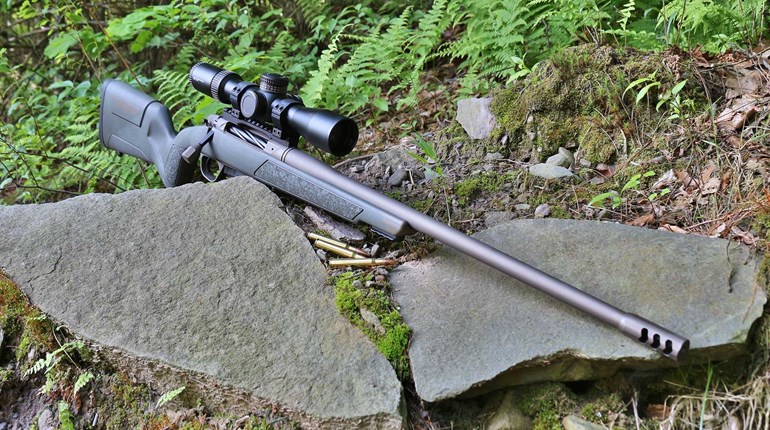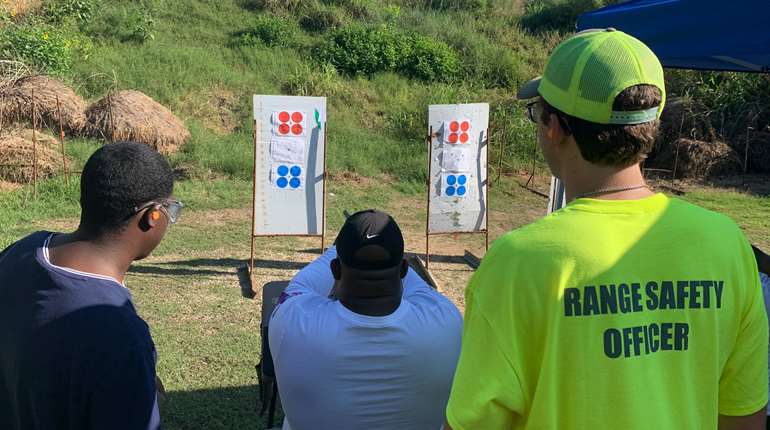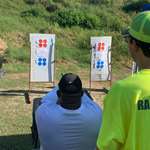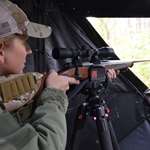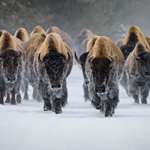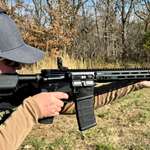
Whitetailed deer are the most popular game animal in the U.S. They can be found coast to coast in nearly every state, and their range covers a huge variety of terrain, from the wide-open prairies to the dense, deep North Woods. Therefore, the way in which we hunt whitetails depends a lot on where we live and what the terrain allows us to do. There are three primary methods of deer hunting, each with a few variations.
Spot and Stalk
Spot-and-stalk hunting is just what it sounds like: You spot an animal, and then you stalk up to it until you’re close enough for a shot. Phrased that way, it sounds simple—but spot-and-stalk hunting is anything but easy.
This method is most commonly used out West, where you might be covering large swaths of hunting ground. Vehicles are often used just to cover more territory, but plenty of hunters are burning shoe leather to cover the miles. If you’re in a truck, you’ll drive the ranch roads and backcountry roads slowly until you spot an animal or a herd. Then you’ll stop, pull out the binos or spotting scope, and evaluate the animals.
If you’re on foot, you’ll probably climb to a good vantage point where you can see a lot of ground, and then you’ll set up comfortably with binoculars or a spotting scope and start working the land over with your optics, very slowly and deliberately, looking for far-off game that might be feeding or bedded down.
In either case, once you’ve spotted an animal that you think is worth pursuing, the real work begins. You’ll make a plan of approach that might have you taking a circuitous route to where the animal is or where you think it might be by the time you can get there. Staying hidden on the entire stalk is the trick, and playing the wind (so you don’t get busted by your scent) is key to success. This might mean you take a long loop around so you can approach from a different angle, and you might lose sight of the animal for a good bit of time while you stalk up on it. It might not even be there when you arrive—that’s all a part of the game.
If everything goes just right, you’ll be close enough for a shot at the end of a stalk. Remember that if you hike for miles to get to the animal where a vehicle can’t go, you’ll have to hike those miles back out with a carcass if you’re successful—maybe in multiple trips, and maybe after dark. Make sure you’re prepared for that before you start your stalk.
Spot-and-stalk hunting can be pretty physically demanding. Wear comfortable hiking boots and dress in layers you can shed as you heat up, and don’t forget to bring water.
Ambushing/Sitting
This is the most common method of deer hunting, but it looks quite different in different parts of the country and in different terrain. Ambush hunting is where you find a location where a deer is likely to show up, and you sit there and wait on him. Ground blinds, tree stands and permanent shooting houses are used with this method, and there’s not much physical activity once you get to your location—you’re just sitting. You might choose to read a book or play games on your phone to pass the time when nothing is going on, because ambush hunting usually involves a lot of downtime.
The hard part about ambush hunting is finding the right location. If you have access to agricultural fields or food plots, setting up on the edge of the plot or on a trail leading to the field is a good bet. Deer are most likely to be heading there in the late afternoon as the sun is setting, but sometimes they use the field all day.
You can also set a treestand deep in the woods set back a little from a travel route. Deer will head to their bedding area early in the morning and head toward a food source late in the afternoon. If you know where the bedding area and the feeding area are, and you know how the deer are getting from one place to another, you stand a good chance of intercepting a buck on his way.
Scouting in advance is a huge part of ambush hunting, particularly if you won’t be sitting over a known food source like a field. You need to know where the deer are spending their time so you know where to set up, and scouting (particularly by the use of trail cameras, but old-school on-foot scouting works if you are very careful) is essential to narrowing down your options.
This is the coldest way to hunt because you won’t be moving at all. Dress lightly on the walk into your spot so you don’t work up a sweat, then put your heavy parka and accessories on once you’re settled in for the long haul.
Still-Hunting
Still-hunting might seem like a mixture of spot-and-stalk and ambush hunting, but it is really its own distinct method. Once common in the North Woods, it is a bit of a dying art, but it can be very effective. It’s also a more dynamic way of hunting for hunters who live where the thick woods doesn’t allow for spot-and-stalk.
Still-hunting is slow hunting. Essentially, it’s a very slow, deliberate walk through the woods—emphasis on slow. You’re not stalking an animal, because you haven’t seen one. Rather, you’re taking a few careful steps, then looking around (often with optics) and searching for deer. Then take a few more steps. Repeat for hours. You’re looking for a tiny tip of antler, a patch of brown fur, the flick of an ear. You will spend a lot of time searching through binos or with the naked eye.
It might sound tedious, and it’s true that still-hunting is kind of a mental game. It’s much more difficult than you think to move slowly, accept the noises you’ll make while trying to sound like something other than a human, and carefully select each and every footfall. You should start a still-hunt with a route in mind—somewhere you will be able to see a little bit, travel quietly and cover however much territory you’re committed to exploring that day. It won’t be a lot.
When still-hunting, an animal can pop up in front of you at any moment. You’ll spook some game (and it might spook you), but you need to be prepared to shoot quickly, and shot opportunities might be close. Keep the sun at your back and the wind in your face. Use shadows, vegetation and terrain to hide yourself as much as you’re able, and plan each move according to what the wind is doing. Use all your senses, including your sense of smell and definitely your sense of hearing. Still-hunting will sharpen your woodsmanship skills. You can even watch for fresh sign (tracks or scat) and might decide to follow it.
Still-hunting can be good in the snow or a light rain, because the dampness will soften your footsteps. Higher-than-normal winds can even be your friend for the same reason, but if they are constantly changing direction, you’ll struggle to see a deer before it smells you.
Still-hunting isn’t too physically demanding because it is so slow, but you’ll still be moving, so don’t dress too warmly. Wear boots that are comfortable and as light as is practical for the conditions.













